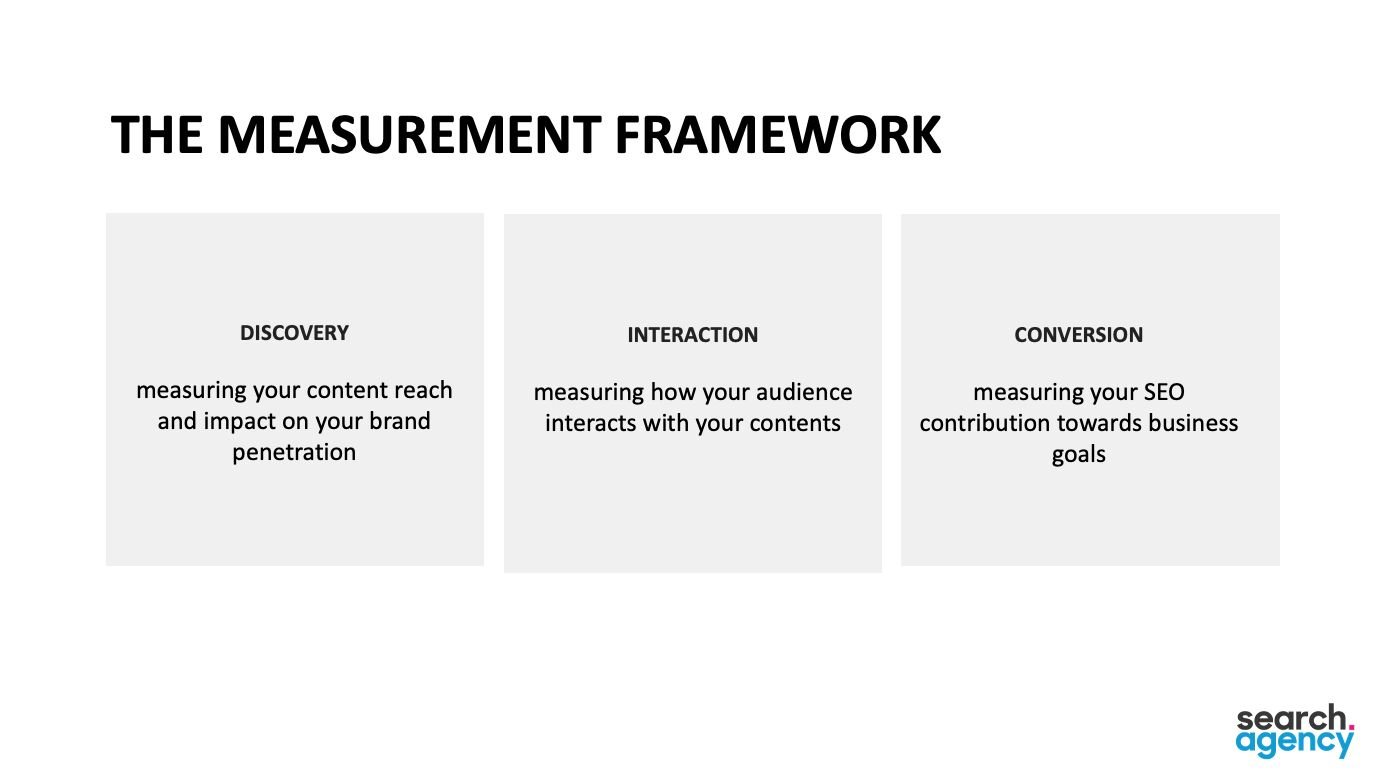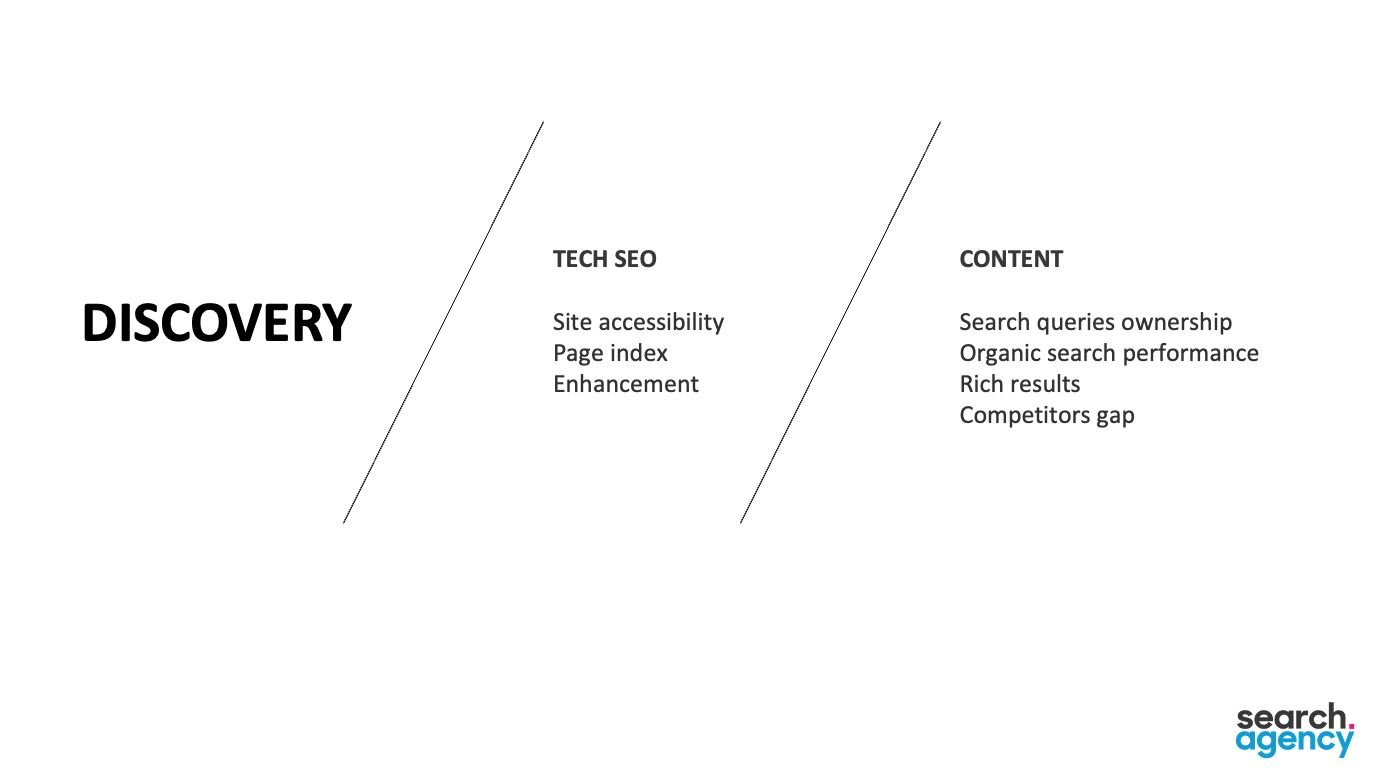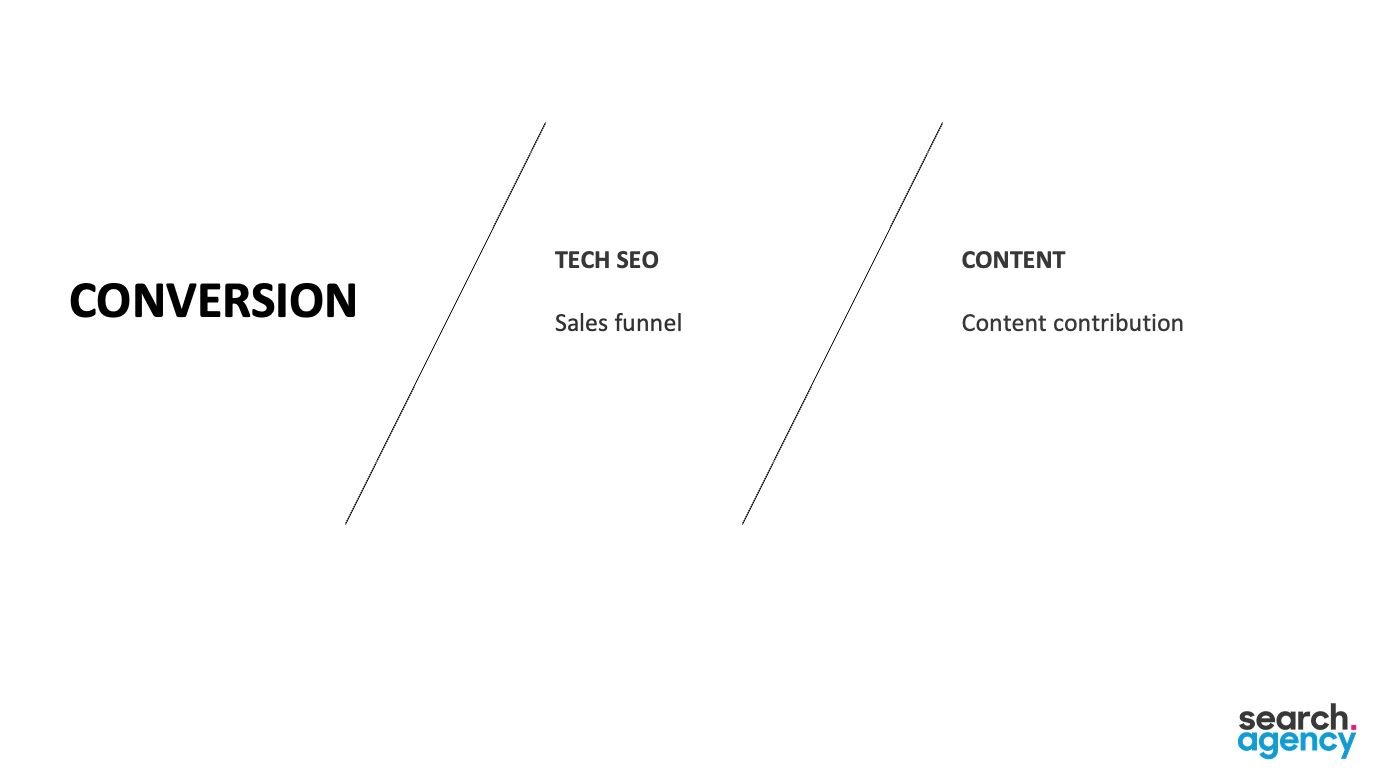Building an Effective SEO Measurement Framework
When working with SEO, one of the most challenging aspects is managing the multiple moving parts and defining a proper measurement environment. Establishing an efficient SEO measurement framework is crucial for evaluating the performance of your SEO campaigns and making data-driven decisions. This framework helps eliminate the measurement bias that often prevents campaigns from delivering optimal results.
Let's walk through the measurement framework I recommend for assessing SEO success, focusing on three key stages: Discovery, Interaction, and Conversion.
Discovery: Expanding Your Content Reach
In this stage, the goal is to measure the reach of your content and its impact on your brand's visibility. Discovery is all about understanding how accessible and discoverable your content is to new and potential audiences.
Two Main Components:
Tech SEO focuses on improving site accessibility, page indexing, and technical enhancements. Your site's technical foundation must be solid to ensure that search engines can efficiently crawl and index your pages. If your site isn't accessible or doesn't appear in search results, no amount of high-quality content can solve this issue.
Content: From a content perspective, this stage measures your ownership of relevant search queries, organic search performance, rich snippets, and competitor analysis. You need to ensure that your content is discoverable and outperforms competitors by filling the gaps and appearing in rich search results like featured snippets or answer boxes.
Measurement Tips:
Track organic impressions and reach across various keywords.
Analyze competitor gaps and where you can outperform them in specific search queries.
Focus on improving site indexability through technical enhancements.
Interaction: Maximizing Audience Engagement
Once your content has been discovered, the next stage is interaction, which measures how well your audience engages with the content on your site. This is a critical point where your content's relevance, usability, and quality will determine how much time users spend on your site and how engaged they are with your offerings.
Two Main Components:
Tech SEO: The technical side of interaction focuses on crawl management, page rendering, navigation, content structure, and page experience. Ensuring your site provides a smooth and efficient user experience is crucial here. If your pages load slowly or the navigation is cumbersome, you'll see high bounce rates, even if the content is valuable.
Content: On the content side, this stage measures SERP interaction, content engagement, topic ownership, CTA (Call-to-Action) interaction, and the shareability of your content. You want users to find your content, stay on the page, engage with it, and share it with others. Interaction metrics provide valuable insights into whether your content meets your audience's needs and interests.
Measurement Tips:
Measure time on page, engagement rates, and scroll depth to assess content engagement.
Track CTA interactions to understand how your content drives users toward desired actions (sign-ups, purchases, etc.).
Use metrics like social shares and backlinks to measure the content's shareability and influence.
Conversion: Converting Audience Interest into Business Results
At the conversion stage, you're measuring how well your SEO efforts drive your audience toward your business goals, whether making a purchase, filling out a form, or taking another action contributing to your bottom line.
Two Main Components:
Tech SEO: Here, the focus is on optimizing the sales funnel from a technical perspective. This includes ensuring that all stages of the funnel (from landing pages to checkout) are functioning smoothly and that no technical errors prevent conversions.
Content: From a content perspective, this stage measures how much your content contributes to conversions. Is the content designed to persuade users to take action? How well does your content address your audience's pain points and needs at the final decision-making stage?
Measurement Tips:
Track conversion rates across your landing pages.
Analyze the role of specific content pieces in pushing users down the funnel (i.e., which blog posts or articles contribute most to conversions).
Focus on optimizing page experience to reduce friction and maximize conversions.
Avoiding Measurement Bias and Traps
One common pitfall in SEO is over-reliance on user indicators such as keyword rankings. While these metrics are valuable, they can lead to measurement bias if used as the sole indicators of success. For example, high keyword rankings don't always translate into higher engagement or conversions. Considering more comprehensive metrics reflecting audience interaction and contribution to business outcomes is essential.
The Importance of Measuring Both Tech SEO and Content
A key takeaway from this framework is assessing both the technical and content aspects of SEO at each stage. Technical SEO ensures that your site can be found and interacted with efficiently. In contrast, the content component ensures that your message resonates with your audience and meets their needs at different journey stages.
Combining these two approaches ensures that all your SEO efforts align with business objectives, leading to a more holistic and impactful marketing campaign.
Implementing an Effective SEO Measurement Framework
To maximize the impact of your SEO efforts, it's essential to measure and optimize each part of the consumer journey, from discovery to conversion. Using this framework, you can:
Ensure that your content is discoverable by a broad audience.
Optimize how users engage with your content through better technical infrastructure and more relevant, engaging copy.
Drive more conversions by ensuring your content and technical SEO align with business objectives.
With this holistic approach, you'll better understand how each element of your SEO strategy contributes to business success while avoiding common pitfalls like measurement bias. Remember, SEO is not just about driving traffic but building meaningful interactions and ultimately leading to conversions that benefit your business.
This framework is a solid foundation for measuring SEO performance and ensuring that every aspect of your technical and content-related efforts works together for maximum impact. By implementing these strategies, you can effectively navigate the complexities of SEO and drive actual results for your business.
Ready to Set Up Your SEO Measurement Environment?
If you're looking to take your SEO strategy to the next level, Awesonatics can help you set up a comprehensive measurement environment from end-to-end. From technical SEO optimization to content performance tracking, our expert team ensures that every part of your strategy is aligned with your business goals. Don’t let measurement challenges hold your campaigns back—partner with us to gain actionable insights and maximize your marketing ROI.
Get in touch with Awesonatics today and start transforming your SEO performance!



